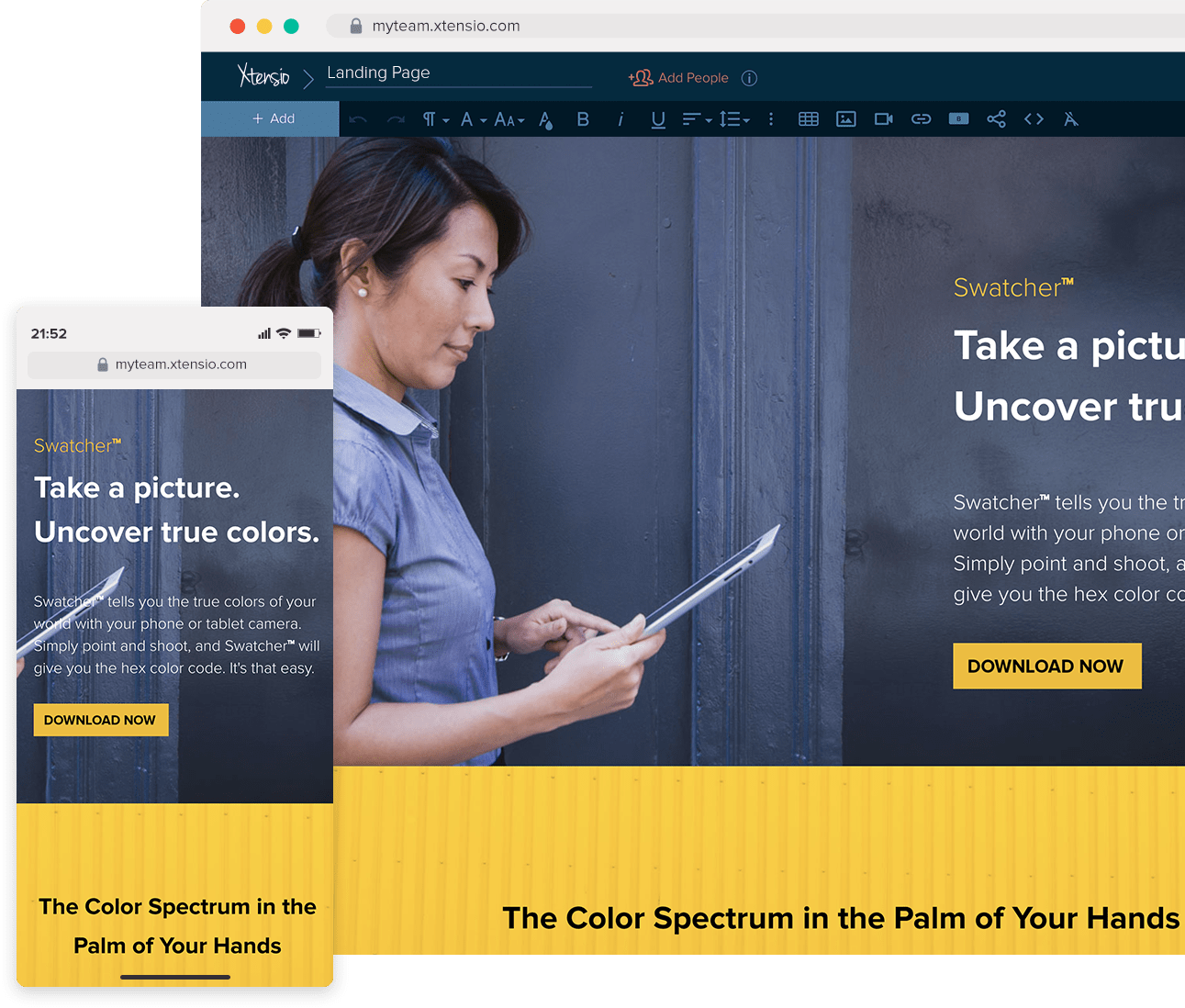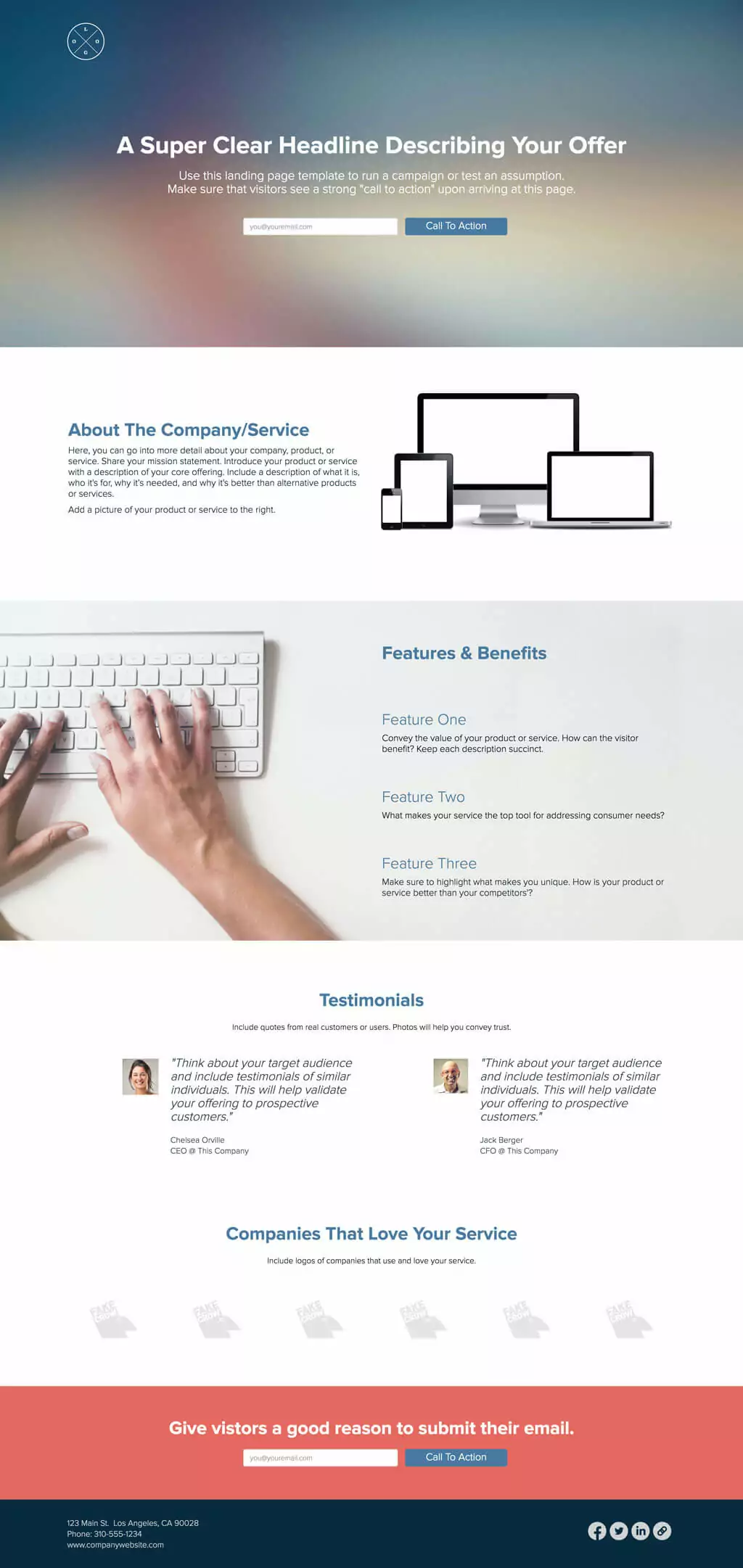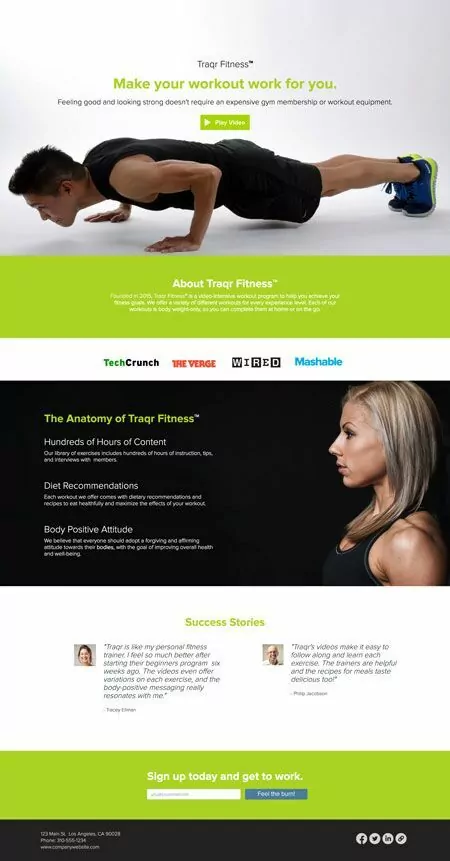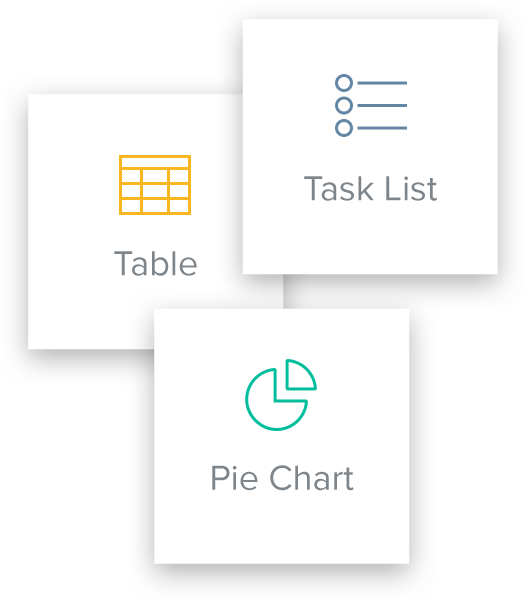How To Create a Landing Page
Updated by Xtensio
A landing page is a stand-alone web page separate from your website that builds a strong case for prospective customers or users through a single call to action. You might want visitors to click a button, leave their email, or watch a video. Follow along with this guide to create a compelling landing page, without a designer! Explore this template.
Xtensio is your team space for beautiful living documents.
Create, manage and share business collateral, easily.
Table of Contents
Introduction
A well-designed landing page serves as the gateway to your brand, product, or service, enticing visitors to take the desired action. Whether you’re looking to boost sales, generate leads, or increase sign-ups, mastering the art of crafting a high-impact landing page is a skill worth its weight in gold.
Instructional Landing Page Template and Editable Examples
Overview Header
Spark Interest From The Start

Headline
The first thing people should see when arriving at your landing page is a clear headline describing your offer. What phrase succinctly conveys your unique value proposition? Does it answer to your visitor’s need? Try to keep your headline under 10 words.
Visuals
The visuals you choose to include on your lead capture page are also important. Stock or original photographs, graphics and visual cues will set the mood for visitors and may help keep people engaged on your page longer. But be careful: visuals can also distract people from your core offering. The key is to test your page’s performance with different optimizations to determine what proves most effective for you.
Call to Action
Directly below the headline, include a call to action where visitors can submit their email address to stay informed about your company, products or services, or participate in a campaign or promotion. Your call to action text should ring true to both the tone established by your company and to what visitors will receive in exchange for sharing their email address.
Quick Stat: You have only 8 seconds to make a compelling headline.
Quick Stat: More than 90% of visitors who read your headline also read your CTA Copy. (Source)
Pro tip: Check out out the brand positioning canvas and lean canvas to align your team, pinpoint your value proposition and brainstorm on a catchy headline.

You should briefly describe your company or service so visitors understand who your company is. Remember that this description should be as concise as possible; there are other places and opportunities for you to elaborate on all the benefits of your product or service, and you don’t want to detract from the call to action.
About Your Company
Introduce Yourself

List the top features of your product/service that will benefit your potential customers in order to learn more about them. For example, if the purpose of your landing page is to target a specific user segment by describing the product offering, then this is an opportunity to test what value proposition resonates most with that particular audience. By testing certain benefits over others, you can gain valuable insights to guide your marketing efforts.
Testimonials & Company Logos
Don’t Take Our Word For It

List the top features of your product/service that will benefit your potential customers in order to learn more about them. For example, if the purpose of your landing page is to target a specific user segment by describing the product offering, then this is an opportunity to test what value proposition resonates most with that particular audience. By testing certain benefits over others, you can gain valuable insights to guide your marketing efforts.
Testimonials
Include quotes from real customers or users that illustrate how your product or service has helped them or improved their lives. Try to include testimonials from individuals that align with your target audience. For example, if your product or service is for educators, include testimonials from professors and other reputable figures in the industry. Photos of the people being quoted will also help you convey credibility.
Company Logos
Include the logos of some companies that already use your product or service. Again, include the most reputable and relevant brands to validate your company. This is also another opportunity to link to publications or referral sites where your products have been featured. If you don’t have any references yet it’s better to forego this section than make it up.
Careful! Don’t use fake testimonials or stock photos of people providing them. Potential customers have an excellent gauge for what’s genuine and what isn’t. If you don’t have testimonials to provide, leave them off your page until you do get some.
Call to Action (Reprise) & Footer
Close The Deal

Call To Action (Reprise)
Make it convenient for your visitors to sign up. Including a second call to action is an opportunity to use a different version of the first one and gives you a chance to end the lead capture page with an appropriate closing statement.
Footer
Make sure the contents of your footer don’t detract from your primary call to action. Making your footer too large or including multiple links here might complicate the purpose of your destination page, risking that visitors will navigate away from the page without answering your call to action.
Metrics of Success
It’s important to consider what metrics are most important when creating your landing page. You can embed your destination page into a separate web page to measure its performance using your website’s analytics capabilities.
Final Thoughts
The Landing Page Creator is not set in stone. Like other Xtensio tools, the template should be repurposed, revisited, and revised. Test, optimize and retest to reach the ultimate goal of the lead capture page, getting visitors to answer your call to action, whatever it may be.
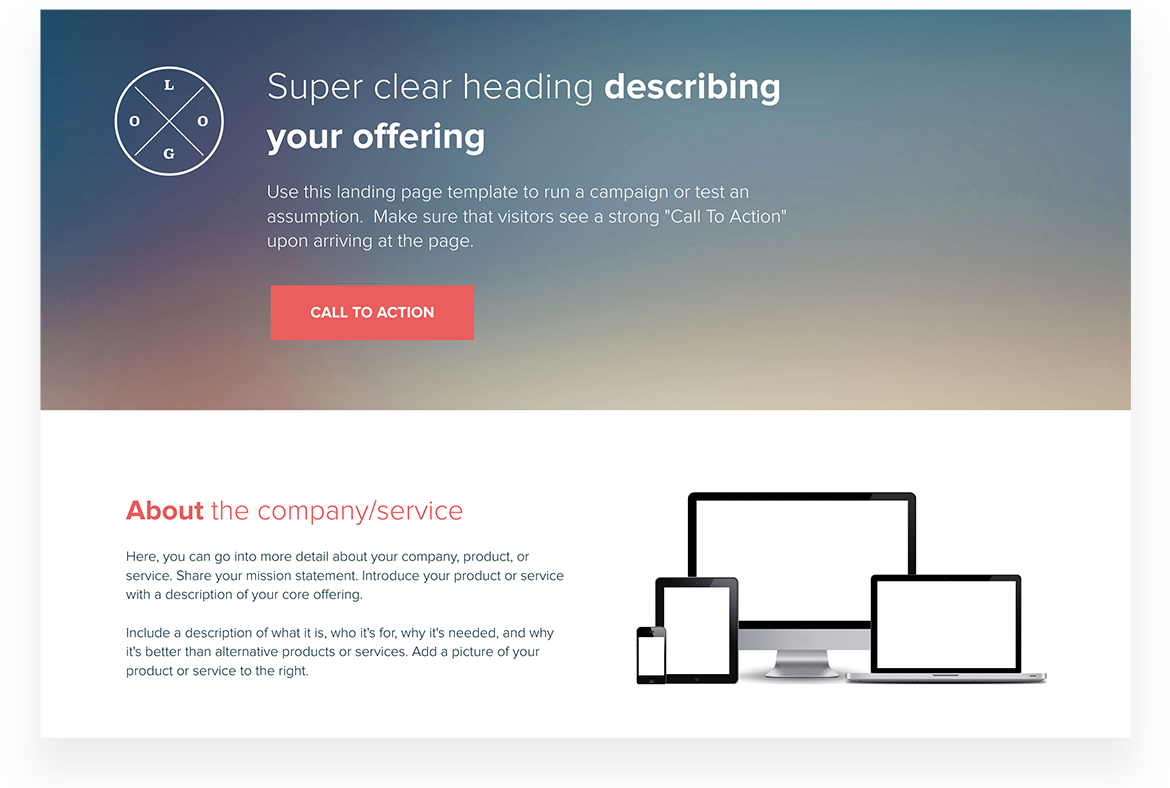
Design, manage and share beautiful living documents… easily, together. Explore Xtensio
- Click and edit anything… together.
- Customize to match your branding.
- Share with a link, present, embed or download.
